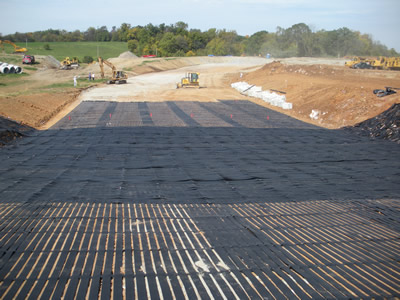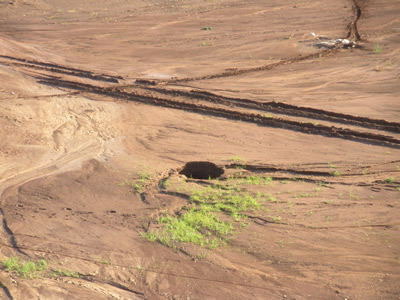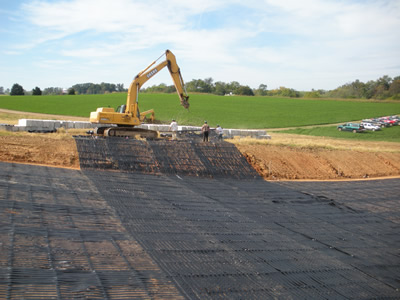
By Chris Kelsey – Sinkholes are a common problem in many parts of the world. Although not much can be done to prevent them from collapsing, catastrophic loss can be prevented. Geogrids have been used successfully for sinkhole mitigation and site remediation designs. Work in the historic town of Union Bridge, Maryland, exemplifies this geosynthetic reinforcement approach.
New development in Union Bridge is at times difficult for two reasons. First, the town is listed on the United States’ National Register of Historic Places, so a premium is placed on preserving the city’s traditional character and protecting the older structures and landscapes. Second, karst terrain is present, meaning that there is some surface instability and a heightened risk of sinkhole development. Sinkholes can develop in these soils gradually or suddenly, and are often caused by chemical dissolution of underlying carbonate rocks.
New building and infrastructure projects proceed with understandable caution. Reinforcement is frequently preferred.
MITIGATING SINKHOLES WITH GEOGRIDS

One of the most important economic forces in Union Bridge is a major North American cement and construction materials company. To secure its future productivity in the town, the company sought to expand its limestone quarry; but to do so, it had to tackle the risks that quarry would cause for the town itself. An existing roadway would have to be realigned, and that meant that the roadway would now have to pass over a potential sinkhole zone. A solution was needed to mitigate potential damage.
Maccaferri was approached by the engineering consulting firm Hydro-Geo Services, Inc. to help solve the problem. With many years of international experience in sinkhole mitigation, the geogrid manufacturer worked with the project team to identify what would be the best solution for effective, economical results and safe, long-term performance. The embankment design of the new roadway leg needed to account for the possible development of a 15-ft.-diameter sinkhole.
A double-layer system design was selected, one that utilized Maccaferri’s Paralink 1000 kN geogrid in longitudinal and transversal layers for embankment reinforcement.

Concrete blocks were added along the perimeter to provide a uniform wrap and to increase friction between the bottom grid and the underlying soil. The grid was covered by a one foot layer of crushed aggregate. To ensure the integrity of the overall design, measures needed to be prescribed to prevent an embankment-weaking mixing of fines and the primary aggregate layer. A woven geotextile separation fabric was installed over the crushed aggregate to prevent this soil migration.
TBH/White Pine Construction installed more than 20,800 sq. yd. of Paralink 1000, the project was executed in a timely fashion, and the roadway opened (in early 2011). The quarry works can continue to flourish, and with them so too does Union Bridge. The town’s physical and economic infrastructures have both been reinforced.
Visit www.maccaferri-usa.com for more geosynthetic case studies from Maccaferri.











